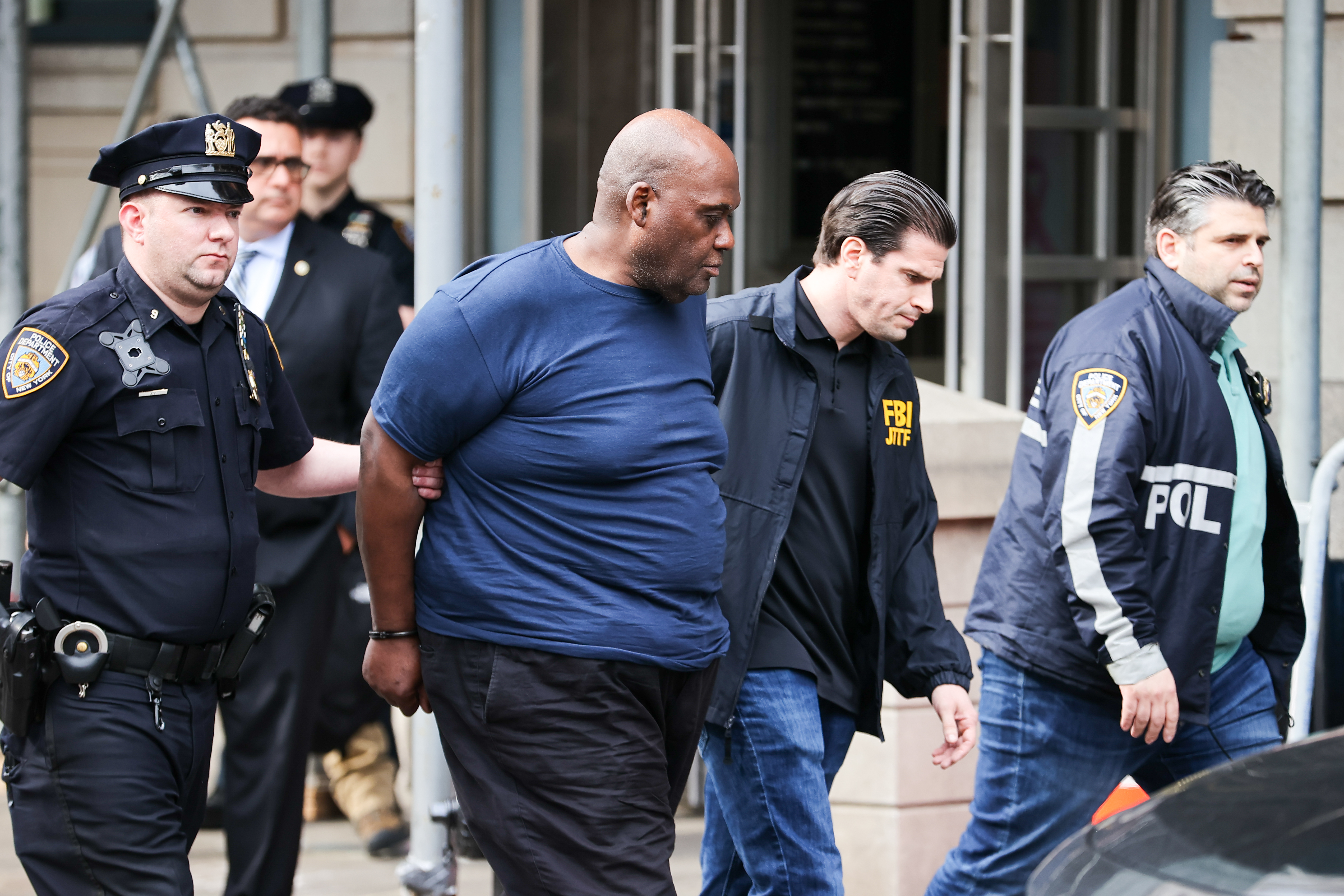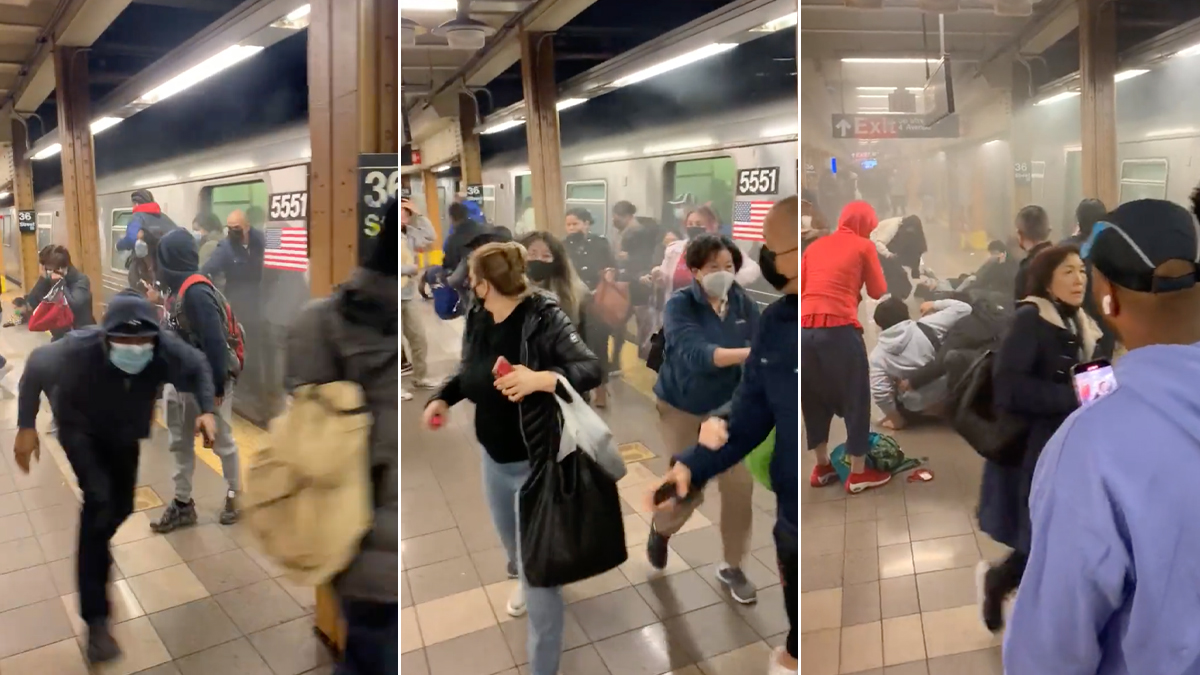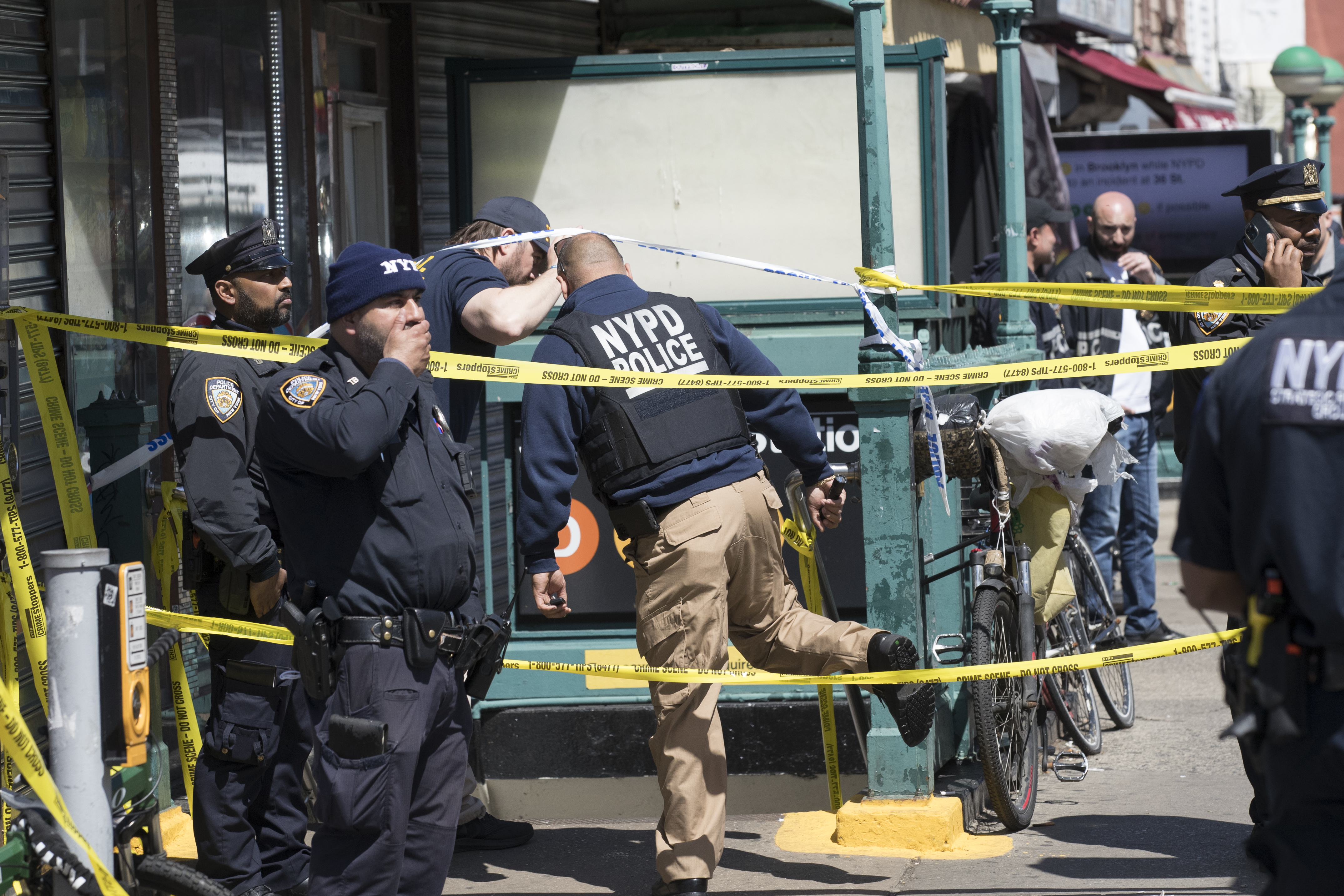Mayor Eric Adams, a former New York City police captain, took office this year with a central focus on making the city feel safe and trying to return it to some sense of normalcy post-pandemic.
But the first 3 1/2 months of his administration have been beset by a string of high-profile violent incidents, with Tuesday’s shooting on a subway train the most terrifying and public of all.
The morning rush-hour attack, in which 10 people were shot on a system that serves as the arteries of New York, complicates Adams’ push to address crime and persuade people that the city of nearly 9 million is safe. It also occurred amid a broader, multi-year debate about policing and crime, and how the city should respond.
In New York City, like many places around the country, violent crime rates have climbed since the pandemic, though they remain far below rates seen three decades ago during the city’s notoriously grittier era, or even just a decade ago.
Get Tri-state area news and weather forecasts to your inbox. Sign up for NBC New York newsletters.
The mayor has been among Democrats who’ve pushed back on calls from liberals to cut police budgets and instead route resources to social services, and he has sought to bring back some controversial policing tactics, saying they can be employed as useful tools without a return to past abuses.
Adams has a unique perspective. He’s not only a former New York City police captain and transit officer, but is a Black man who in the past has criticized his own department’s unjust practices, and he is someone who was brutally beaten by police as a teenager.
BROOKLYN SUBWAY SHOOTING
Since he took office Jan. 1, he’s been speaking about policing and crime frequently, as the list of frightening incidents piled up quickly.
The city saw a rash of random shootings, the killing of two police officers and attacks that included a woman shoved to her death in front of a train by a stranger.
“This has been particularly brutal. And I feel for him. I think he’s done a fine job, especially as he’s just getting used to it,” said Adams’ predecessor and fellow Democrat, Bill de Blasio.
Most of the violence the city has experienced has not been in the subways but in neighborhoods, particularly in communities of color. But attacks on the subway, a vital sprawling network millions of New Yorkers rely upon, loom large in public perceptions of safety.
Adams rode the subway to City Hall on his first day as mayor, calling 911 to report a fight near the train platform before he even boarded the train. He admitted later that he didn’t feel safe on the train after encountering a yelling passenger and several homeless people, and said the city needs to tackle “actual crime” and “the perception of crime.”
Adams had already announced plans earlier this year to boost the number of police officers on subway platforms and trains and to address crime generally. He has brought back a controversial police anti-gun unit, called for help from the federal government cracking down on ghost guns and pushed for changes to New York’s bail laws.
Critics contend that focusing just on beefing up police isn’t a solution to making the city safe, but more investment is needed in mental health programs and other social services.
Frank James, the 62-year-old suspect in the Brooklyn subway shooting, spoke of his own mental health struggles in a series of YouTube videos in which he described going in and out of mental health facilities, including some in New York City.
Before Tuesday’s attack, Adams had started sending out social work teams to try to connect people on the streets with mental health help and other services. The mayor also announced plans to significantly expand a summer youth job program designed to put young people in paid jobs when school is on break, with the aim of diverting them from activities that could lead to arrest or violence.
After this week’s subway shooting, Adams, in a series of interviews, discussed plans to increase the number of police officers patrolling the subways and suggested metal detectors could be installed in stations — a decision that ultimately would rest with the transit authority, which falls under state control.
Danny Pearlstein, a spokesman for the nonprofit Riders Alliance representing New York City bus and subway passengers, said that despite a high-profile incident like the shooting, the subway is still the safest way to get around the city, with traffic accidents and pedestrians being struck by cars a far more likely hazard.
Rather than explore metal detectors and other ways to scrutinize passengers, he said New York needs a better transit system overall that gets more people on board and provides safety with strength in numbers.
“By having transit that is faster and more reliable and gets to more places that people want to go is a way to boost ridership,” he said.
De Blasio praised Adams’ attempts to address both crime and perceptions of crime, and said public safety experts recommend the best way to make the city feel safe is “more normalcy, more recovery from COVID.”
Getting people back on trains and back in the city is not just a reminder of New York’s resiliency, but also an added layer of eyes and ears to compliment the police, the former mayor said.
“The overall reality is NYPD has actually done a very good job over the years of making the subway safer and safer,” he said. “Police can do so much, but they can’t do it alone. They need eyes and ears — and cooperation of the public.”
Former City Council Speaker Christine Quinn said it’s difficult to have a discussion about how to prevent Tuesday’s shooting without knowing more about the alleged perpetrator and his motivation and mental health, and that makes it difficult to link it to a broader examination of other violent crime in New York.
“One of the challenges with crime is you can get three people shot in one night and they’re all shot for different reasons that have different solutions and different responses,” Quinn said.
She said Adams, with his law enforcement background, understands that crime and criminals are not one-size-fits-all. And while guns may be involved in a lot of crimes and more illegal guns need to be taken off the street, other incidents can stem from gang issues, mental health issues or other factors.
Confronting crime generally requires a multi-faceted response, she said, and help from many layers of government.
“There are very few things that one elected official can fix alone,” she said. “Even in a big city like New York, a lot of what exists here is also controlled by the state and the feds.”
“But there is no bigger bully pulpit and convening power—short of the president of the United States—than that of the mayor of the city of New York. And we know Eric Adams is not afraid to use that,” she said.




